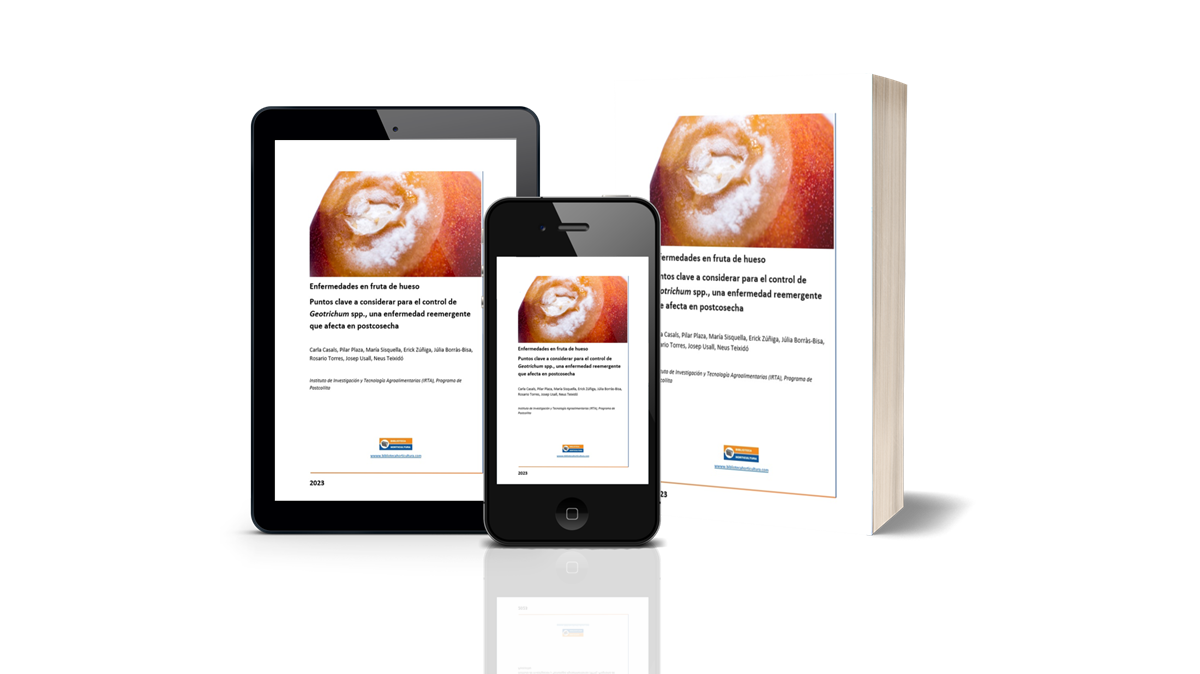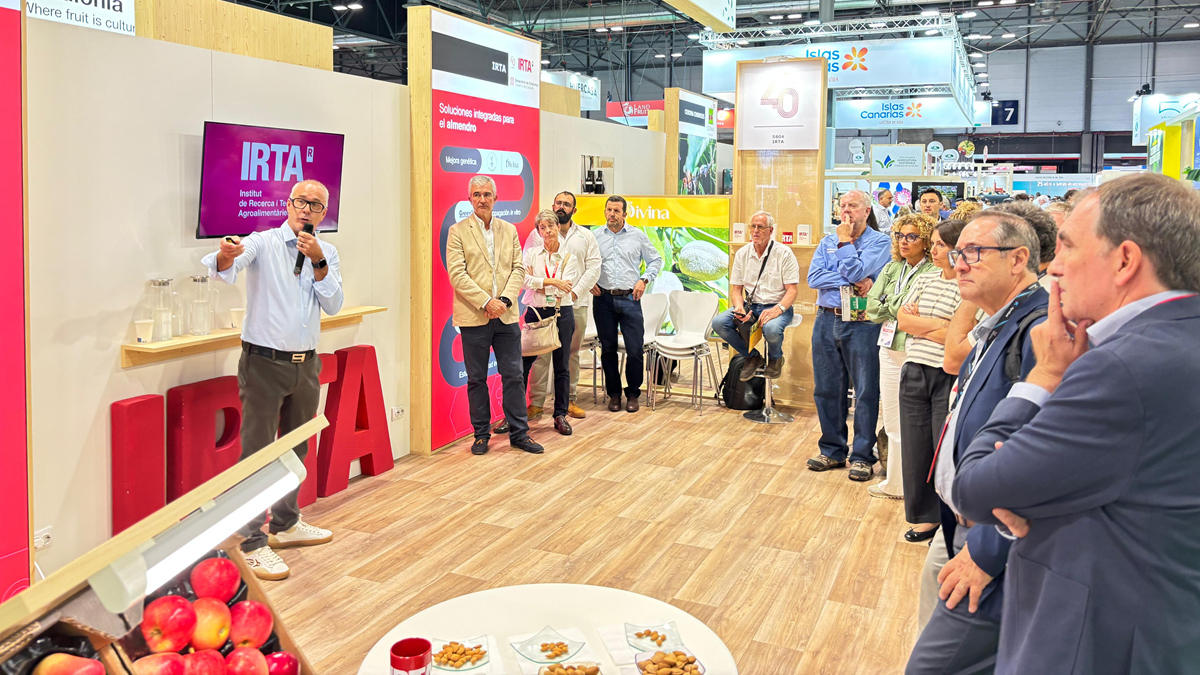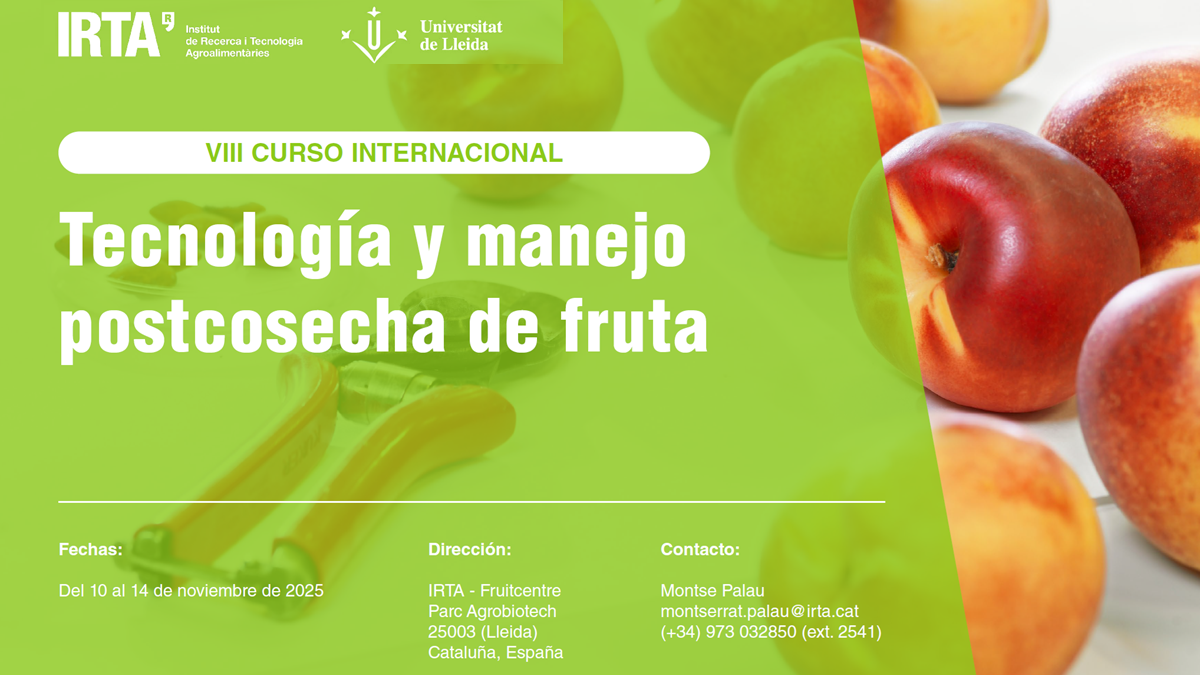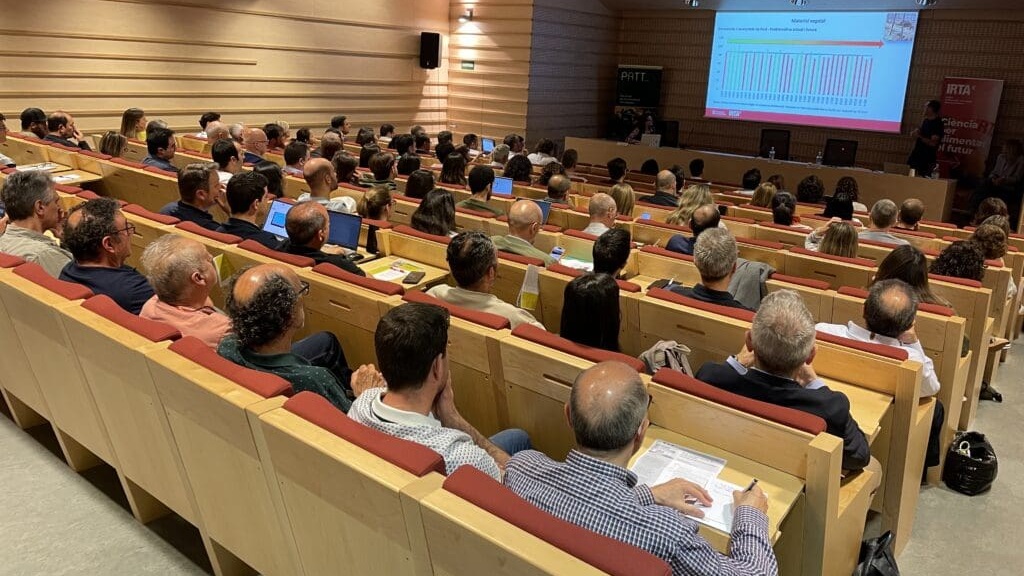

IRTA
Services
Challenges and Strategies for Geotrichum spp. Control, a Reemerging Disease in Postharvest Stone Fruit
Download the document "Diseases in Stone Fruit: Key Points for Geotrichum spp. Control, a Reemerging Postharvest Disease" by Casals et al. in Biblioteca Horticultura (in Spanish)

Brown rot, the main postharvest disease in stone fruits, is mostly caused by Monilinia spp. Currently, we have a wide range of effective tools for its control, including chemicals applied both before and after harvest, as well as knowledge of appropriate cultural practices, alternatives to fungicides, and infection risk prediction models. However, since 2016, a new challenge has emerged with the detection of Geotrichum candidum, another pathogen causing losses in postharvest stone fruits. This sporadic reappearance can result in even greater losses than those caused by Monilinia spp.
The inoculum of G. candidum is mainly found in the field, with soil being its primary reservoir. This means that the arrival of fruit from the field to fruit processing centers poses a potential contamination risk. In fact, processing centers have been observed to act as a source of inoculum for healthy fruit, especially on the surfaces of sorting lines, where a higher population of G. candidum is detected.
To design an optimal control strategy, it is essential to take measures to prevent the spread of soil inoculum to trees and implement appropriate prophylactic protocols on the surfaces of sorting lines in fruit processing centers. A study conducted by the Pathology Group of the Postharvest Program at IRTA has revealed that the risk of infection and disease development in healthy fruit manipulated on a simulated packaging line, whose surfaces are contaminated by G. candidum, depends on the type of subsequent shipment the fruit undergoes. In this study, it was found that intercontinental export poses the highest risk of infection. Additionally, regardless of the export destination (national or European), the risk of disease development in previously contaminated fruits is higher in fruit packed in plastic-wrapped trays than in fruit packed in trays.
Regarding Geotrichum spp. control using chemical products, it has been confirmed that none of the products currently applied for postharvest disease control in stone fruits are effective against this pathogen. Therefore, identifying tools that contribute to Geotrichum spp. control is one of the current and priority challenges in the research lines of the Pathology Group of the Postharvest Program at IRTA. Based on current knowledge of this disease, careful harvest management, avoiding contact between fruit and packaging with soil, along with the application of disinfection protocols on the sorting surfaces of fruit processing centers, will be crucial to prevent contamination of healthy fruit and reduce the risk of disease development during the shipment period. Another crucial aspect will be to consider the history of each field to determine the most suitable shipping logistics and thus avoid losses during this critical period.
Index:
- Postharvest Diseases in Stone Fruit ... 1
- Main Postharvest Disease ... 1
- Brown Rot as a Reemerging Disease ... 1
- Where are the Sources of Brown Rot Inoculum Located? ... 2
- Key Points for Disease Control ... 3
- Conclusions ... 5
Access the document: "Enfermedades en fruta de hueso. Puntos clave a considerar para el control de Geotrichum spp., una enfermedad reemergente que afecta en postcosecha"












